Wandering in Wiltshire - Morgan's Hill and Calstone Downs
- gladysperrier
- Aug 11
- 8 min read
This is perhaps going to be one of the most difficult blogs for me to write as words to express the true wonder of what we experienced on this 7.5 mile hike from Morgan's Hill along Calstone Downs and on to Cherhill Down and the Landsdone Monument fail me. The beauty of Wiltshire never ceases to amaze me and this trail is testament to that.
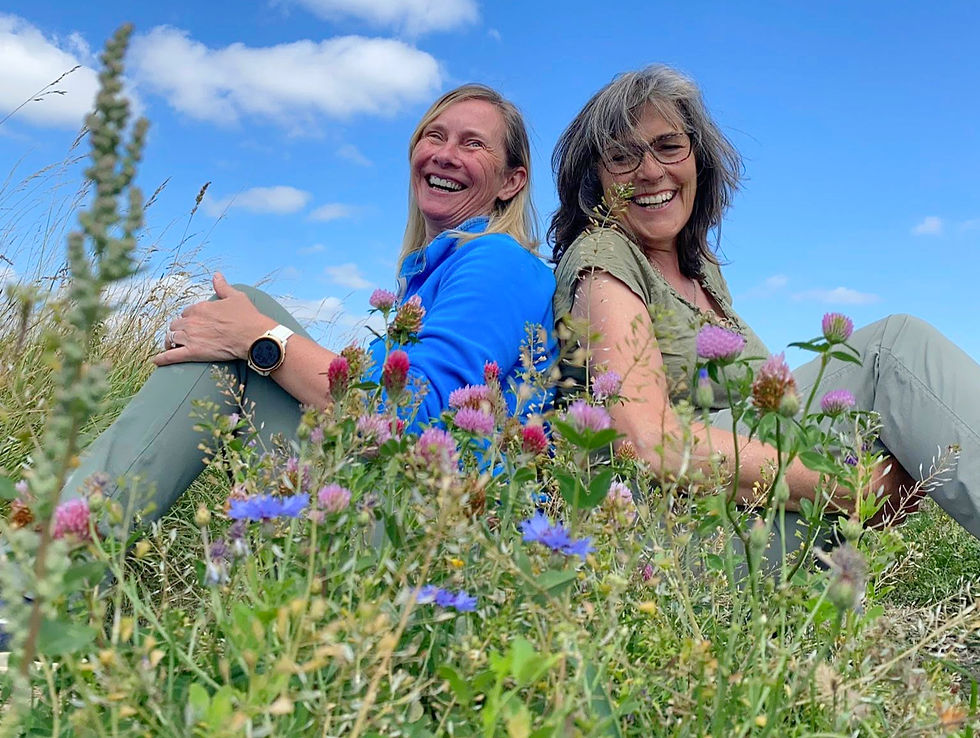
A New Adventure
On 8th August 2025 my hiking buddy and I parked up at the Smallgrain Plantation picnic site car park, about four miles outside Calne. As we bit into our traditional chunks of shortbread whilst tying up our boot laces and sorting out apps and maps, we chattered excitedly about what might lie ahead. Our last hike in Wiltshire, from Adam’s Grave along the Wandsdyke and then back along the Kennet and Avon Canal set the bar particularly high. We felt it would be an extremely hard act to follow. However, we would find out that this route delivered in bucket loads – this was Wiltshire after all.
Green Space Therapy
Climbing a short incline above the carpark we found ourselves almost immediately surrounded by calming shades of green in a haven of beech trees. Straight away we felt the benefit of nature as, with a sigh and a soft release of breath, there was a real sense of tension easing and blood pressure lowering.
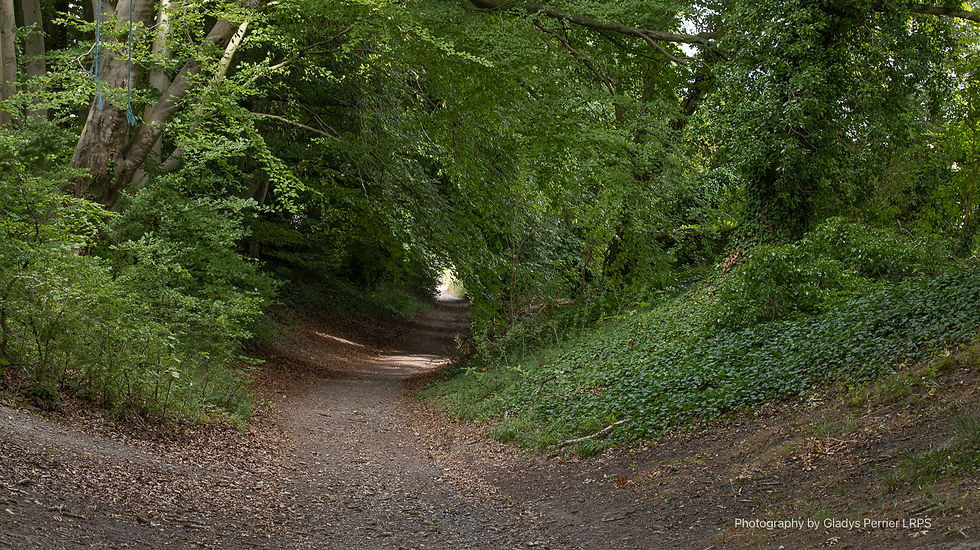
We followed a stone track up hill and very soon the landscape opened out on our left-hand side to reveal one of the key landmarks we were hoping to reach on route. Across a landscape of combes and terracettes sat the Landsdowne Monument on top of the distant Cherhill Down. This is a view I have always admired from a distance but, even though I have been venturing into the wilds of Wiltshire for nearly 10 years now, this was going to be my first time ever visiting the monument. I have tended to gravitate towards Pewsey Down.
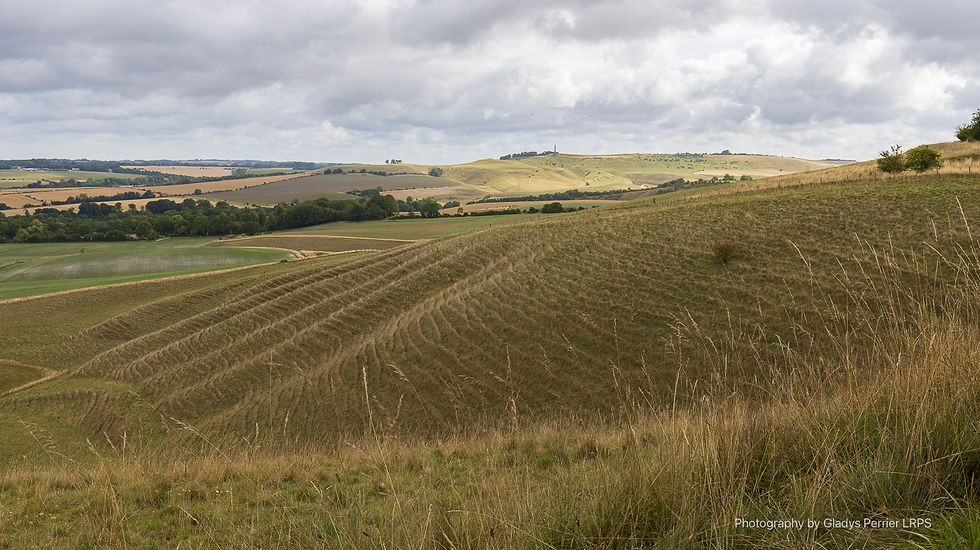
The Cows of Morgan's Hill
Our path today followed the Wansdyke Way for a short distance, leading us through a gate onto Morgan's Hill, a beautiful sloping pasture. It was evident, with signs of fresh cow manure, that we would be encountering cattle again today. However, following on from my previous experience with cows near Adam’s Grave, this did not concern me and I was confident that cows grazing in a nature reserve would be far more interested in the delicious rich pastures it offered rather than bothering two silly ladies as they twittered like goldfinches.
We trod carefully avoiding stepping in ‘cow plonks’ (the eloquent term my family used as I grew up in rural Ulster). Sure enough, we found the cows a short distance away and as we approached, we were greeted by the sound of clumps of vegetation being drawn from the dry ground and munched by these gentle creatures. They barely stopped their chewing to watch us as we passed by.
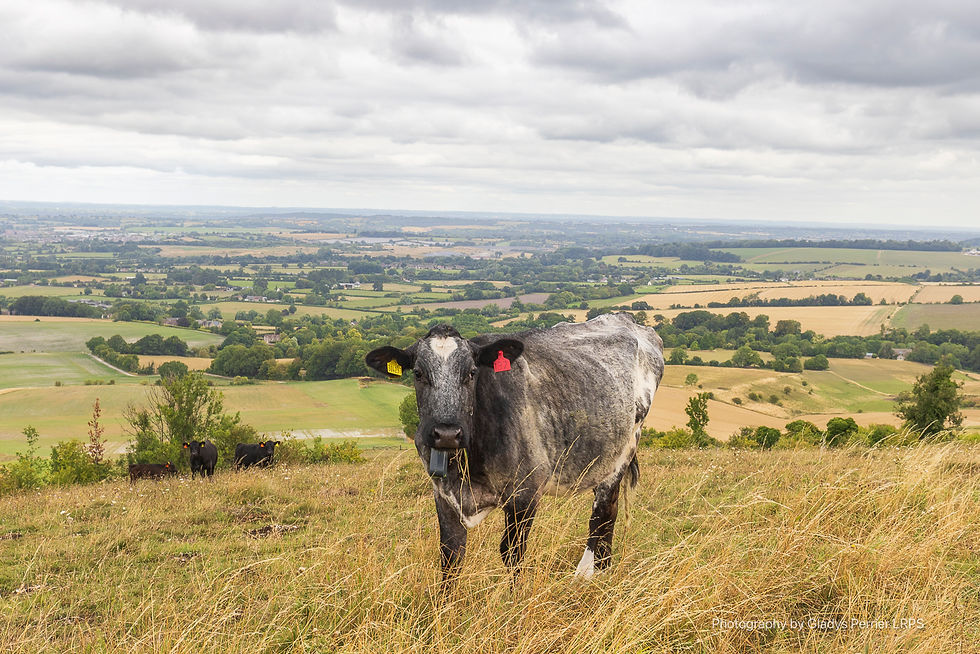
We followed the path down a steep incline and back out onto the stony track where we crossed over and into a lovely grassy pathway through berried hawthorn bushes.
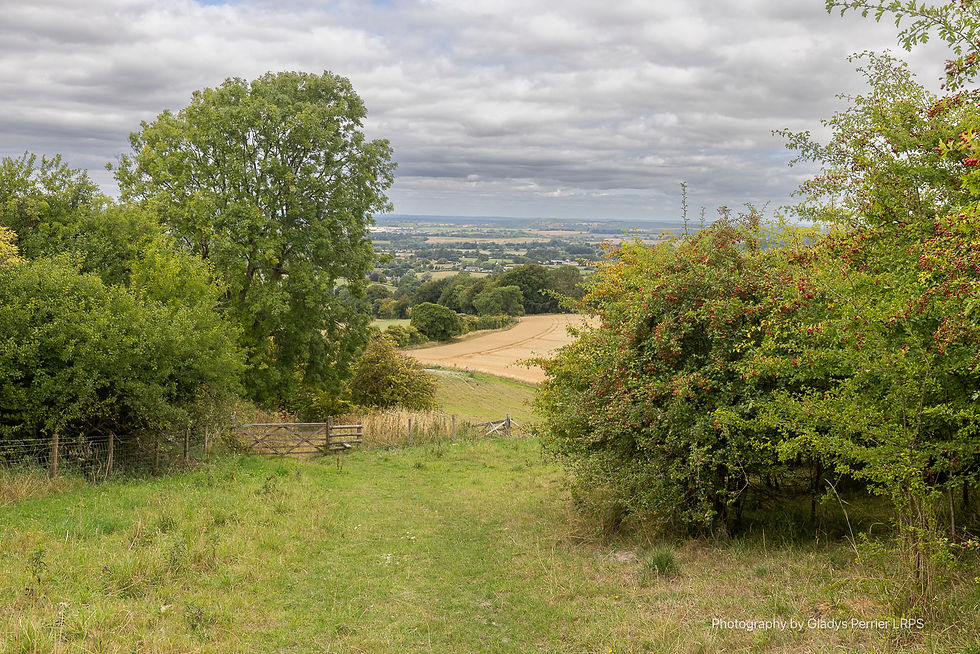
Looking to our right, the Landsdowne Monument remained in sight providing us with a useful sense of our bearings. This reminded me of my first walk along the Ridgeway
National Trail before the Didcot power station was demolished, the power station always coming back into view as I ate up the miles. Also, along the Thames Path National Trail, Canary Wharf seemed to be forever in our sights as Michala and I headed towards the Thames Barrier last year.
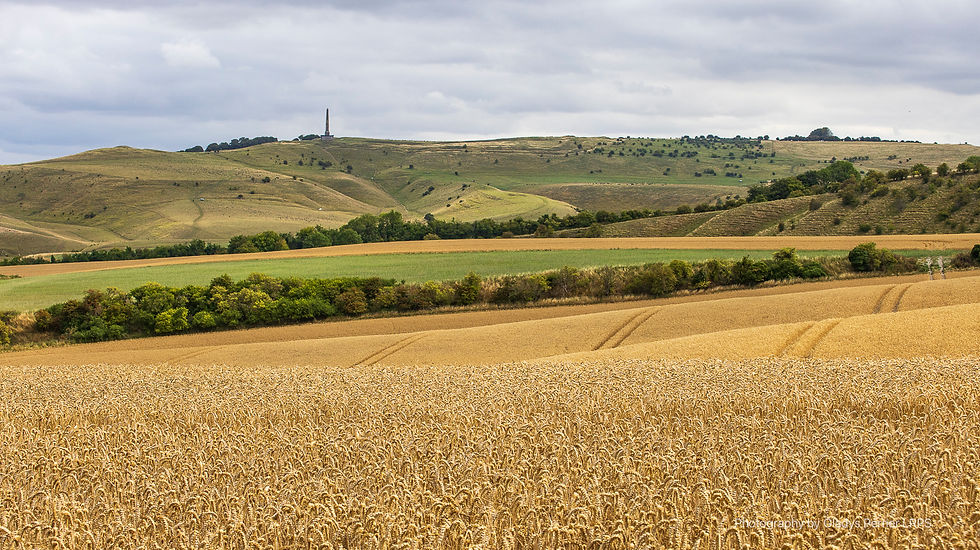
We continued steadily downhill along the wide grassy track between the fields, passing through ramblers’ gates and then alongside a golden haze of wheat ready for harvest. The stalks whispered in the breeze along with the chirping of grasshoppers, as wrens and robins, hiding in the hawthorn, sent out calls, warning their fellow creatures of intruders.
Preparing for a Daily Flutter
We almost crept along this path as wall browns lay on the path before us, warming up their wings in preparation for their daily flutter.
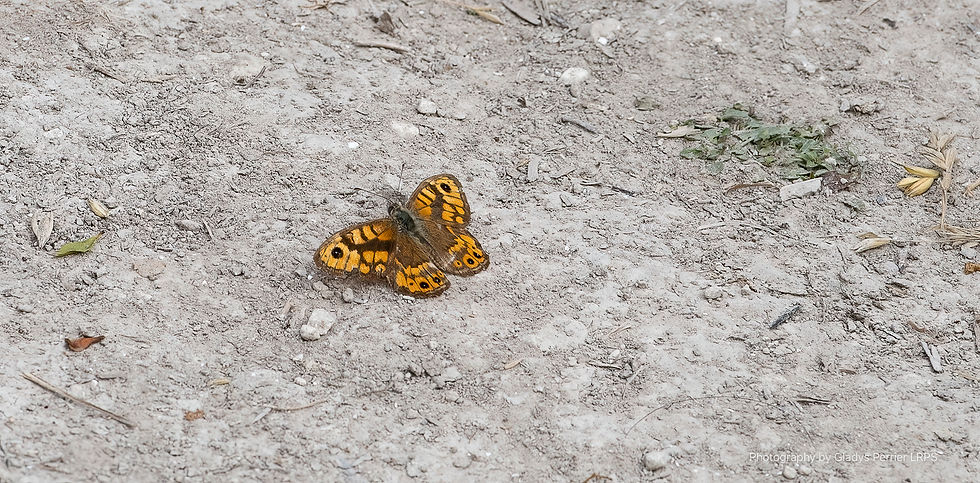
Calstone Wellington
Arriving in Calstone Wellington, previously known as Calstone-Willington according to my copy of Lewis’ Topographical Dictionary, we found ourselves in what could only be described as a beautifully manicured landscape of ornamental trees. A grand horse chestnut, wore a perfectly formed cloak of green with hints of autumnal copper. It stood proudly against a steely sky, the sun not yet agreeing to show itself. Perhaps someone one was watching over us, knowing we needed to get some miles under our boots before the heat of the day revealed its true nature.
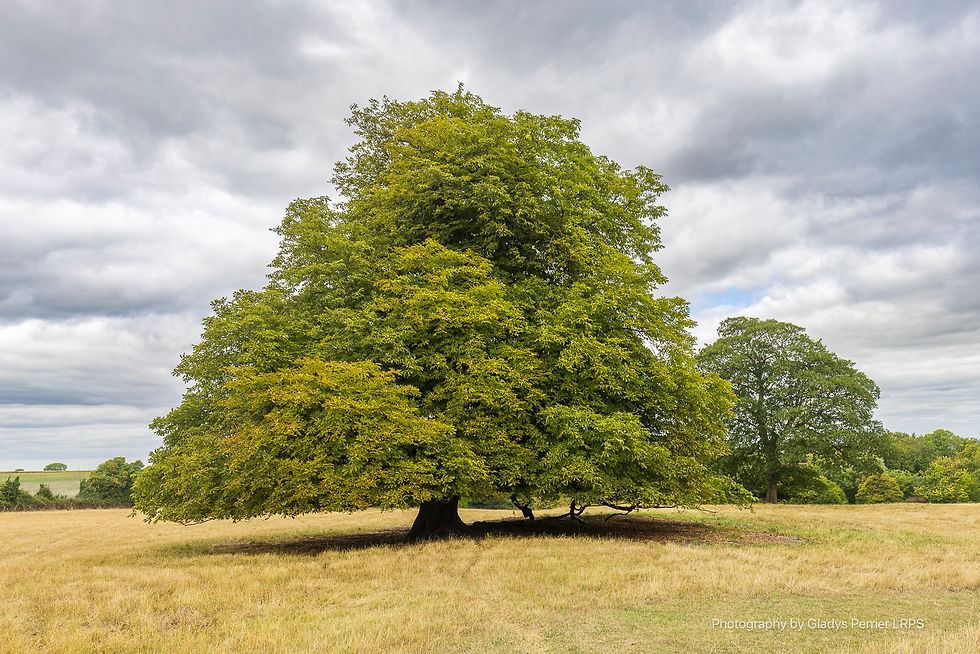
Our progress was slow, not because we are aged and unfit but more because we could barely step a few paces before stopping in awe of yet another wonder to behold.
Hidden behind a line of trees we spotted the stonework of Saint Mary's Church. We passed through the lychgate and up through the path strewn with last year’s fallen leaves. Pushing open the heavy door, we entered the silence of a small but beautiful church.
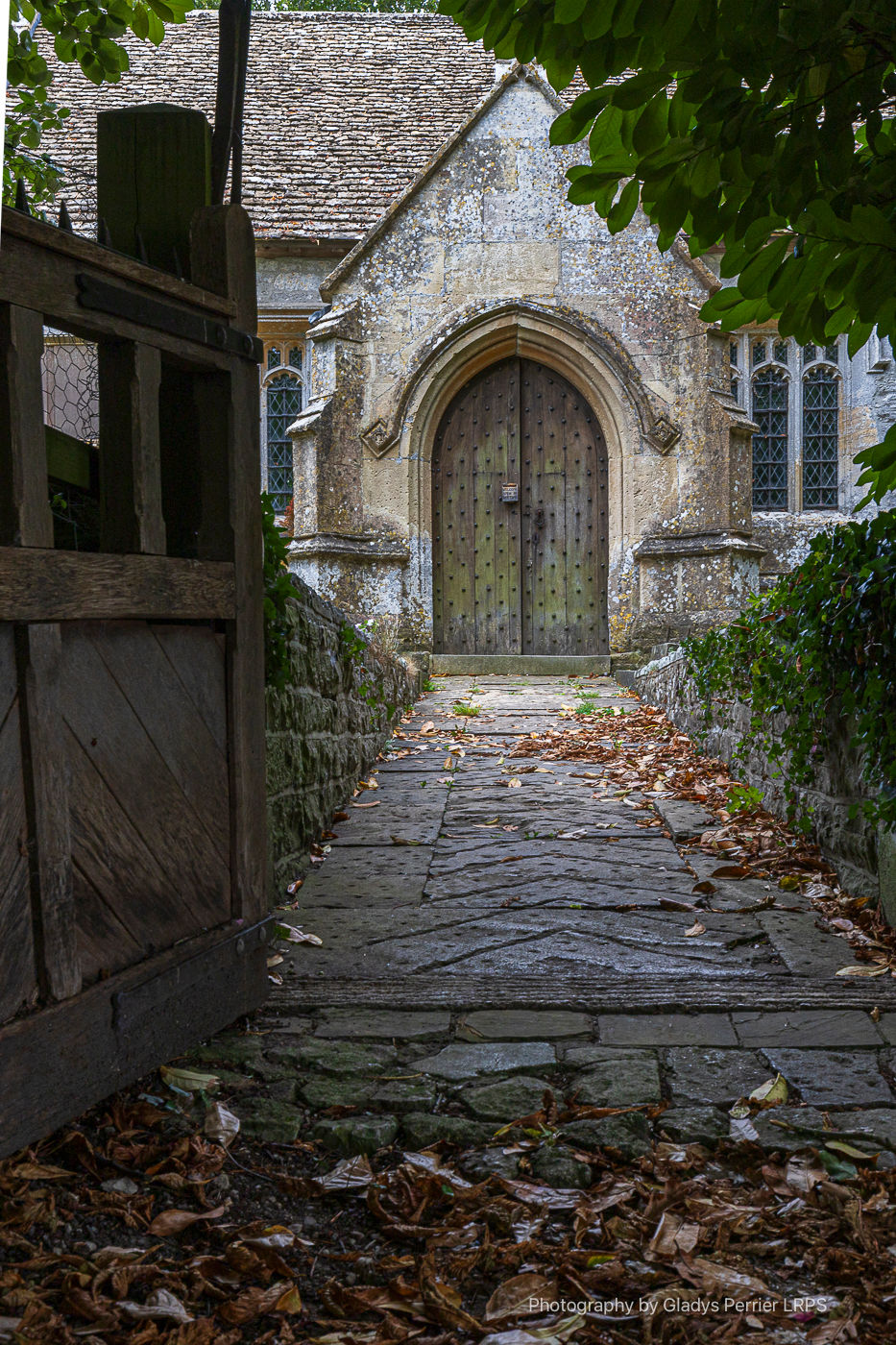
This current church dates back to the 15th century but there has been a church on these grounds since the 13thcentury. The church inside has a quiet simplicity about it, not overly ornate except for a beautiful oak carved reredos, behind the altar. This was created in the 1920s from reclaimed timbers from the old chancel roof.
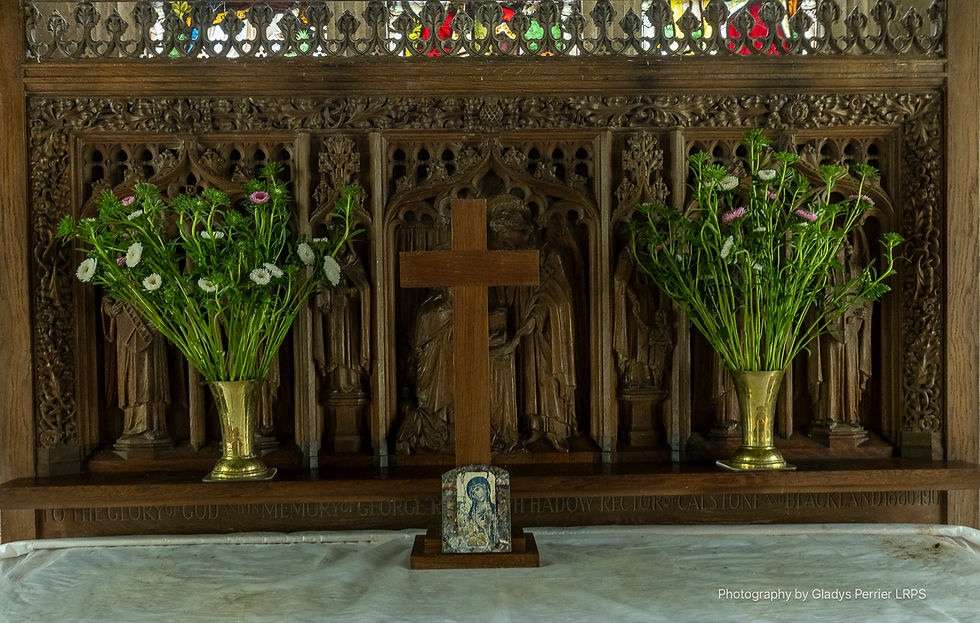
Outside we circumnavigated the church, exploring what has been repudiated to be one of the most beautiful churchyards in England.
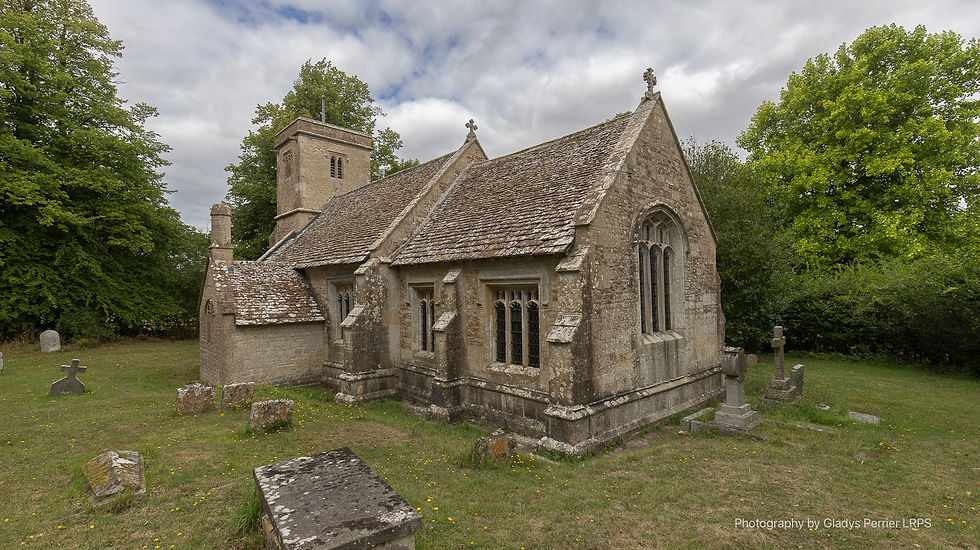
Leaving the church behind, we continued along another stone track with deep banks covered in ivy, the sky obscured by beech and sycamore.
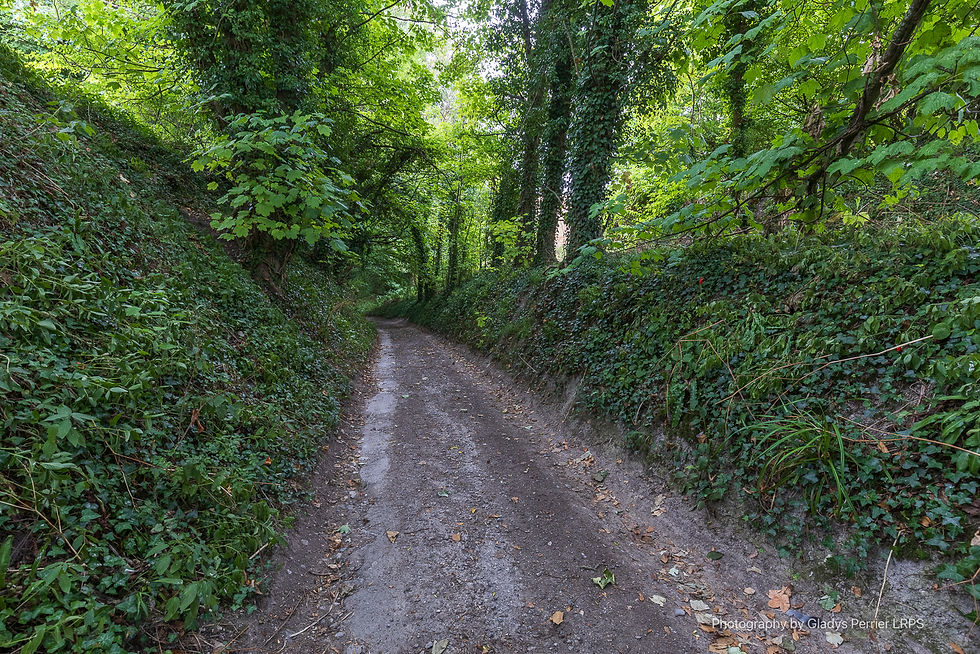
Scrumping
It was along here that we discovered another gem. Almost lost among the greenery stood an old decrepit cottage with a green façade, its door aged, the windows milky white with dust and cobwebs. Overhanging the roof was an abundance of deep red Victoria plums. Despite feeling guilty, like some naughty children scrumping in somebody’s orchard, we stretched to reach a bough to pull down a couple of plums. Having tasted one we could not resist these deliciously sweet fruits as we stored away a couple more for a special treat at lunch time.
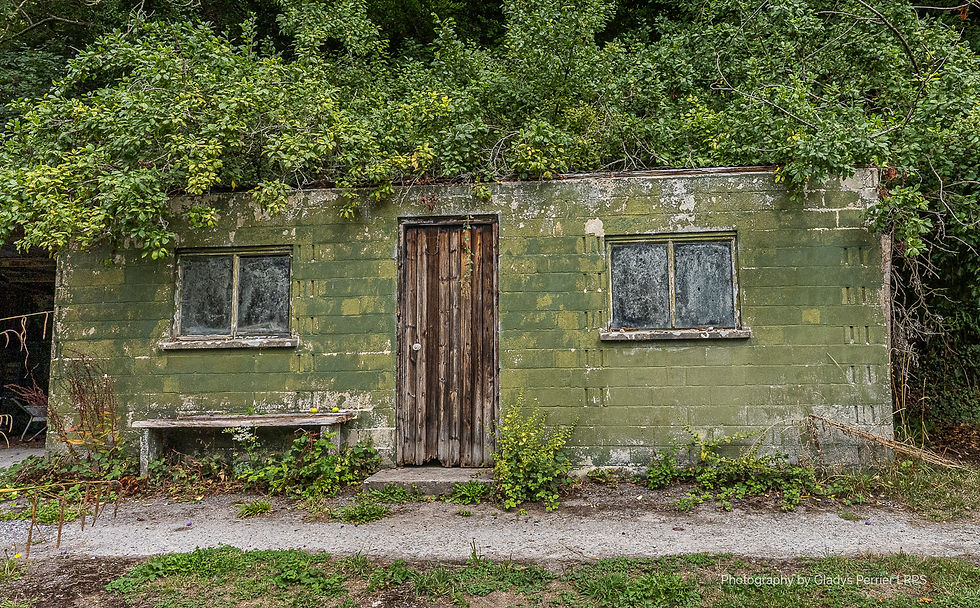
Exposed tree roots stretched out along the banks of the sunken path and the canopy of trees created a beautiful, shady tunnel. The ground was strewn with leaves of copper and gold.
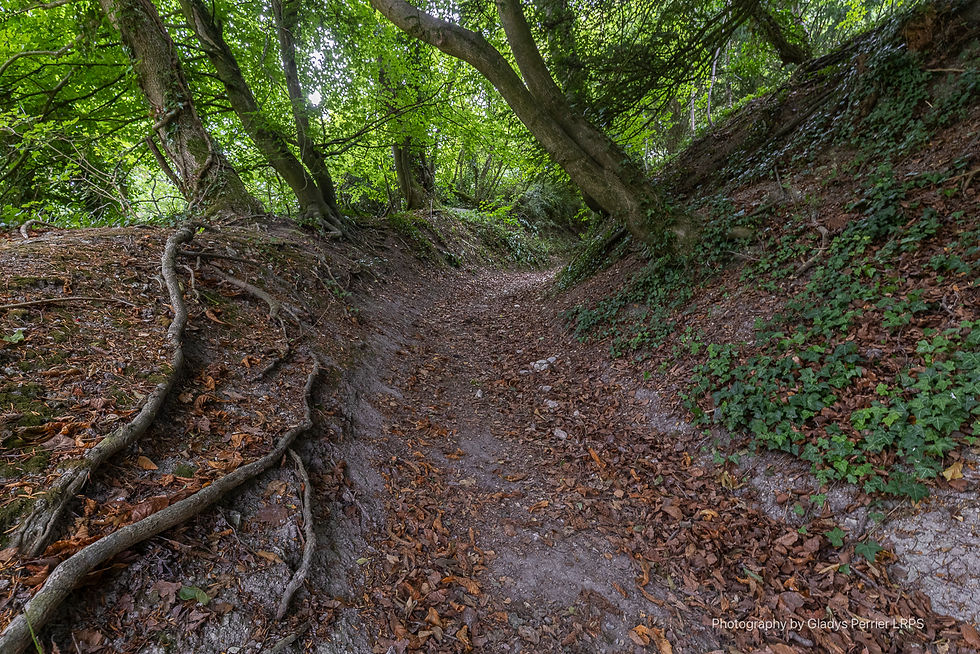
Robin's Pincushion
In the hedgerows we were intrigued to find among the dog roses what appeared to be some sort of unusual flower. The ‘Seek’ app for once identified this correctly as robin’s pincushion.
We were captivated by the idea of a robin sitting down to darn his red waistcoat, like some creature straight out of a Beatrix Potter story. However, its origin is less appealing when you learn that it is in fact not a flower but is created by the larvae of the small gall wasp. Fortunately, I did not learn this until returning home. I prefer our interpretation.
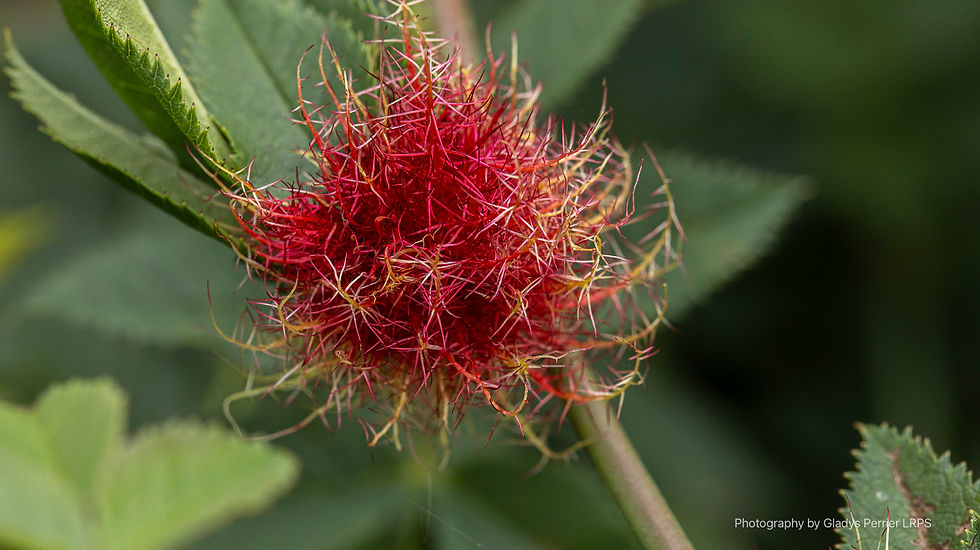
Wiltshire Wildflowers and Pollinators
Arriving on the high pastures of Calstone Down we were greeted by the glorious scent of clover, the buzzing of bees and the stridulations of crickets including perhaps the higher pitched tones of the wart-biter bush cricket.

I had thought by August we would have missed most of the wildflower meadows leaving only seed heads. I could not have been more wrong. In front of us lay an extraordinary explosion of colour. The meadow was vivid and dazzling.
Among the flowers were three types of clover – crimson, pink and Alsike Clover (which always reminds me of a deliciously cold scoop of white chocolate and raspberry ice cream - which would not have gone amiss on this warm day.
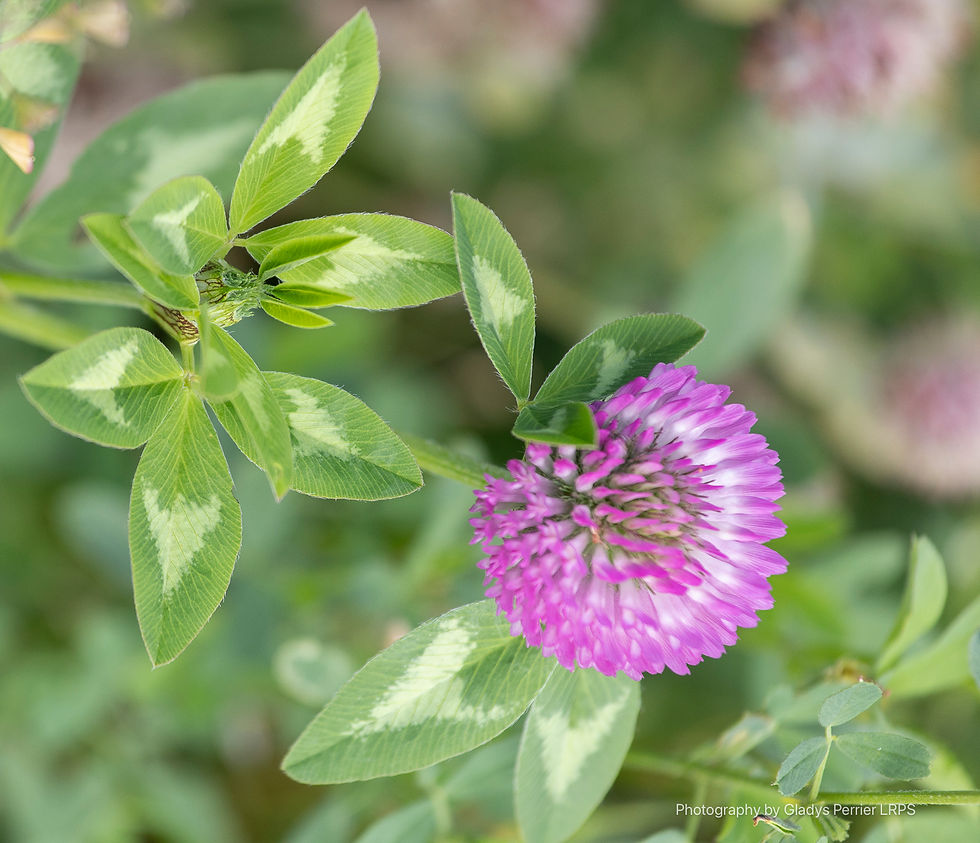
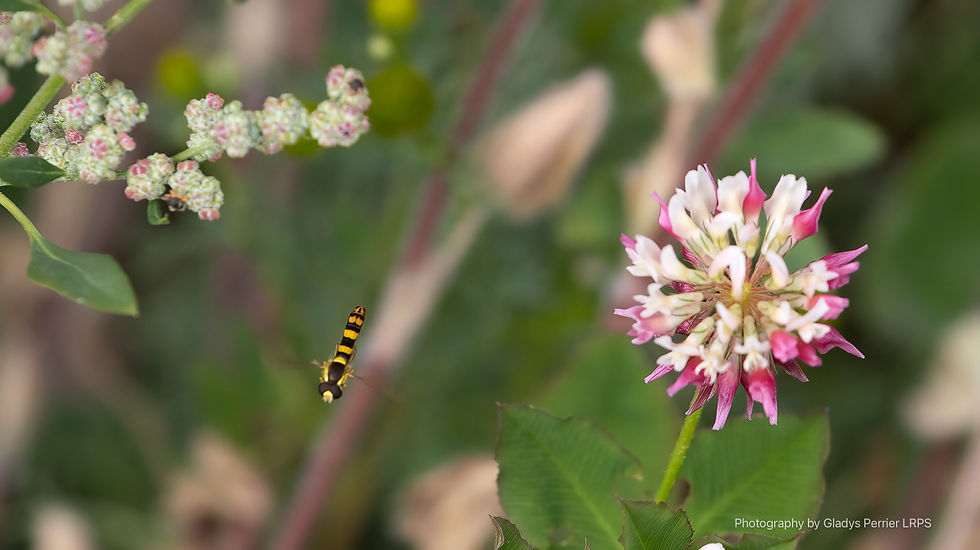
On the subject of ice-cream, spear thistles offered the addition of marshmallow pink globes.
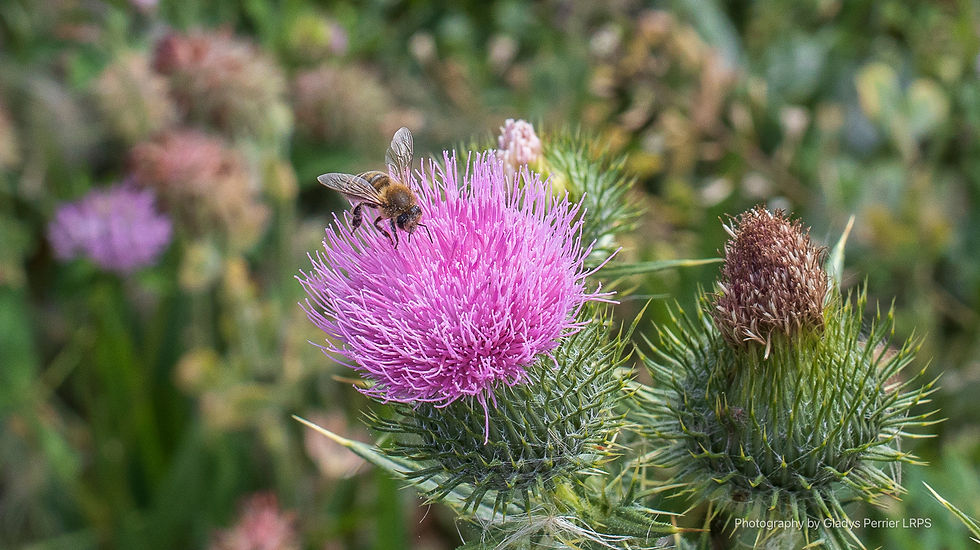
Alfalfa added shades of pale mauve to deep purple with similar shades from round-headed rampion, spirals of tansy-leafed Phacelia, globes of woolly thistle and star shaped cornflowers.
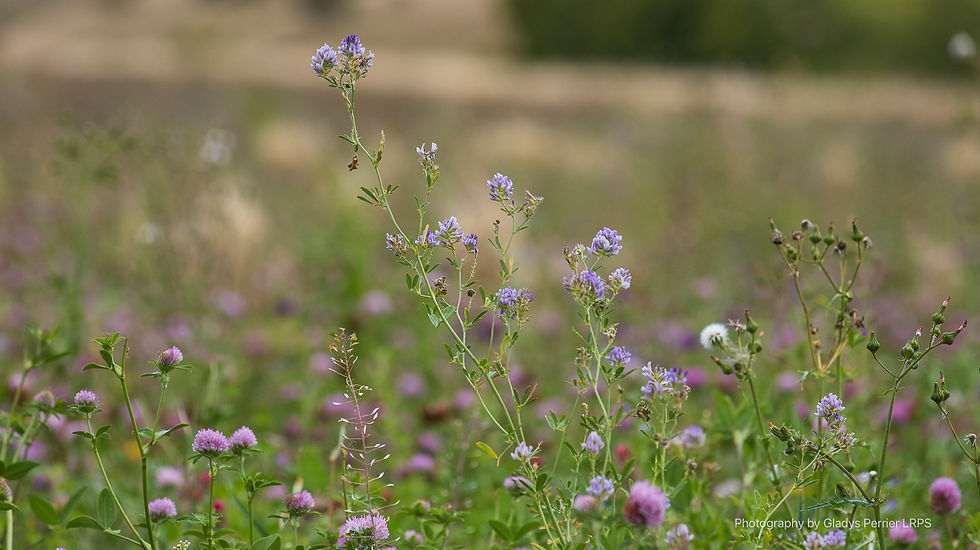
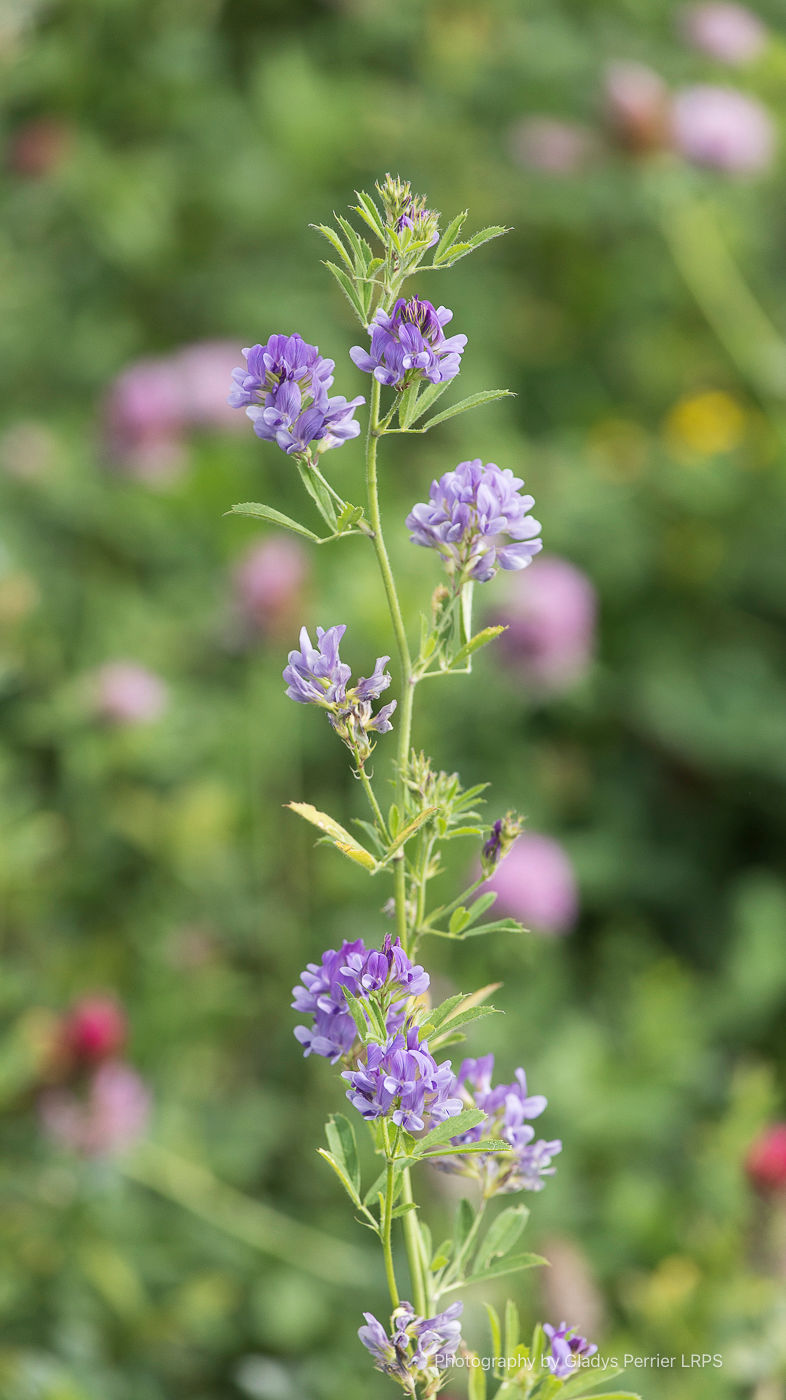
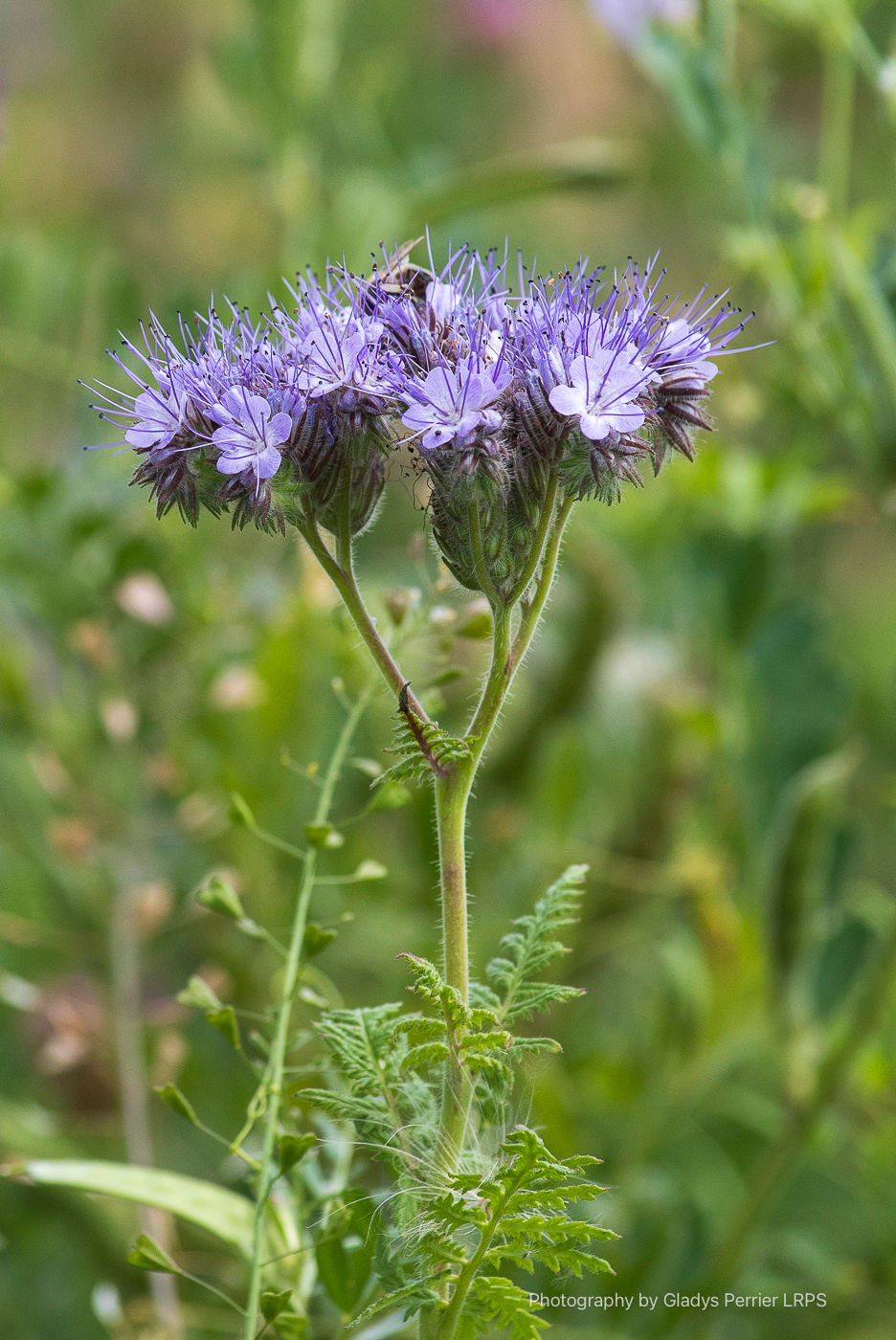
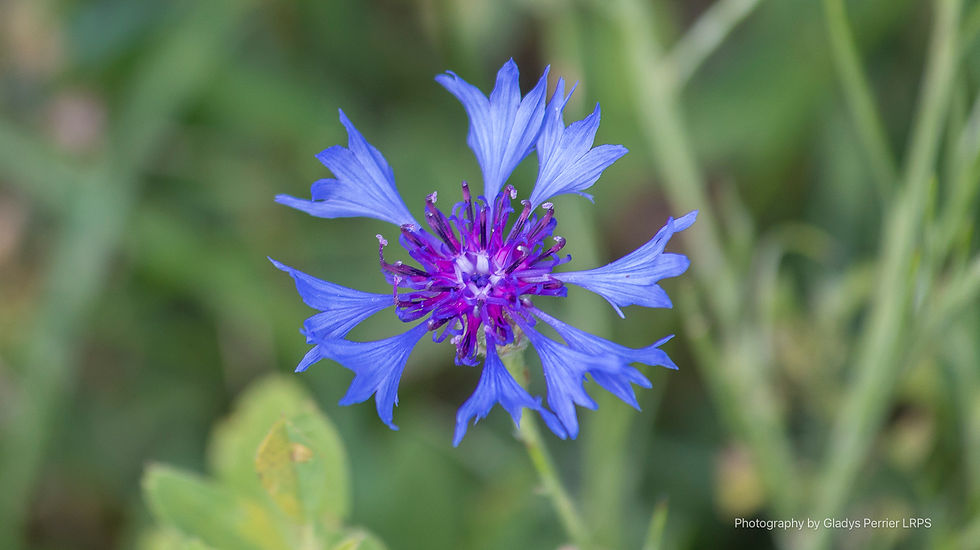
Added to the mix was a light peppering of poppies with camomile on the side.
As if all this was not enough, this diverse array naturally appeals to pollinators. We saw many a bee, hoverflies and butterflies.
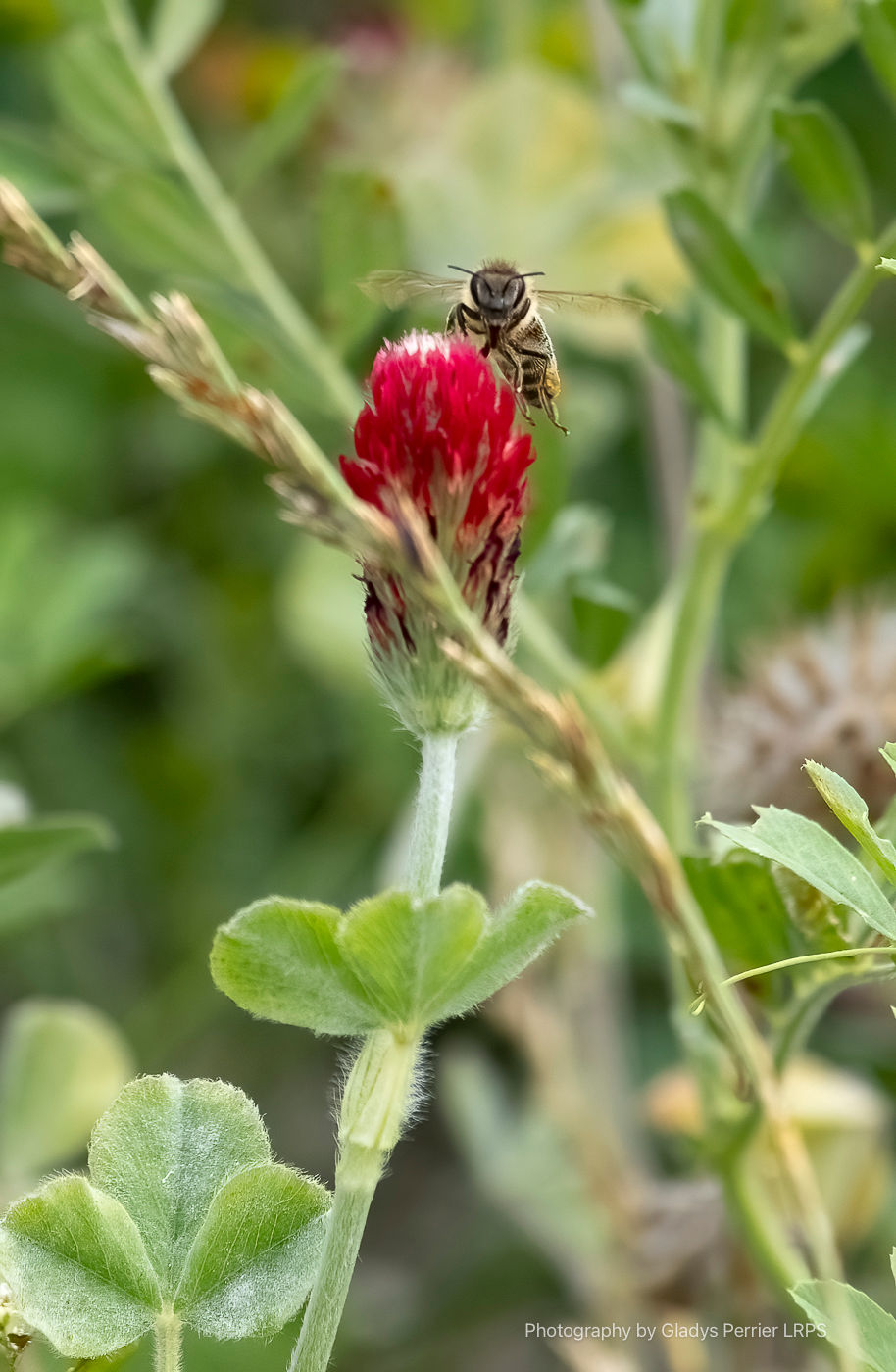
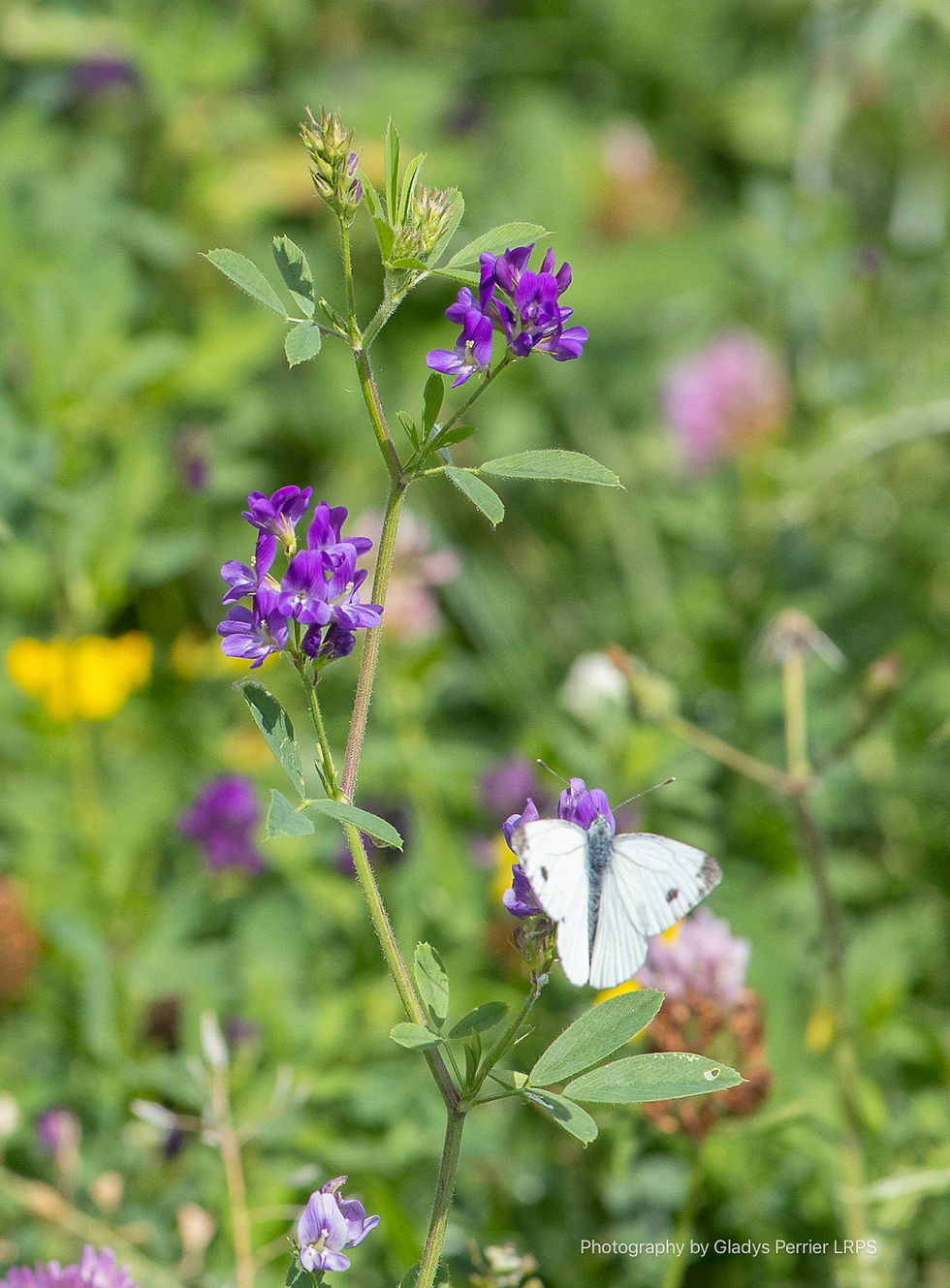
Perhaps most delightful of all was the flash of an exquisite egg-yolk yellow butterfly flitting amongst this tapestry. (Sadly, never stopping and always following an erratic flight making it impossible to photograph). My friend, professional photographer Robert Harvey, had told me to watch out for the Adonis Blue (featured in his superb book ‘Photographing Wiltshire’. In describing the Adonis Blue butterfly he says it ‘looks like a piece of summer sky fallen onto the downland turf’. To see the Clouded Yellow butterfly was an additional delight.
However, it did not end there. We linger a whole 75 minutes in this spot. Sitting gazing across this sea of colour with the Landsdowne Monument beyond. We drank in the atmosphere, listening to the sounds of the meadow buzzing, flitting of wings, and the occasional twitter (not from Michala this time) as we nibbled on sandwiches.
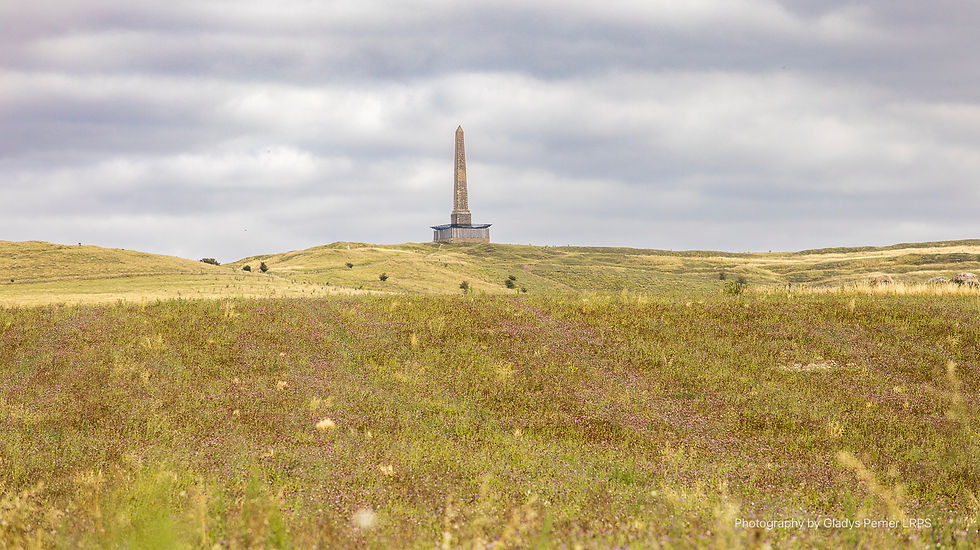
A Bird of Prey?
Over our shoulders we saw a very different creature in flight as he waved his extended claws, nosing his way up high above the meadows. You will not find this sturdy creature in any bird books. This was an Atlas A400M airbus.
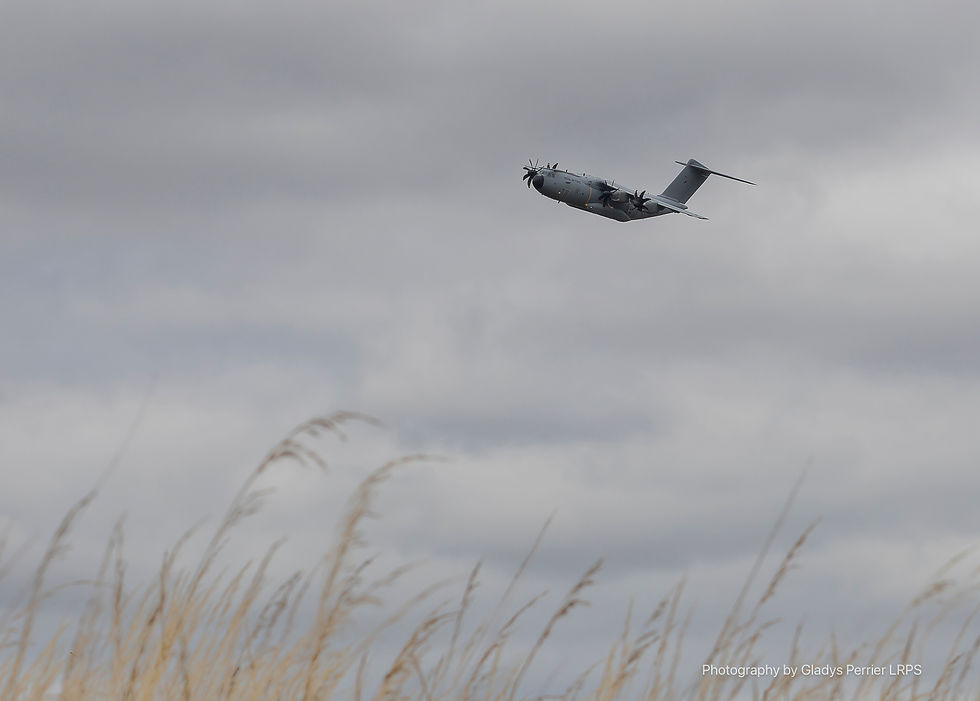
Humming Bird Hawk Moth
Turning back around, looking over the carpet of flowers we spotted a flash of russet-coloured wings. This was something I personally have not seen since the mid-80s when I spent the summer in the Lot region of France in a gite surrounded by wildflowers.
Drawing nectar was a hummingbird hawk-moth, stopping briefly and then flying to the next bloom, no doubt loving this location every bit as much as us.

We lingered on but eventually realising we had not even covered half of our route it was time to uproot ourselves.
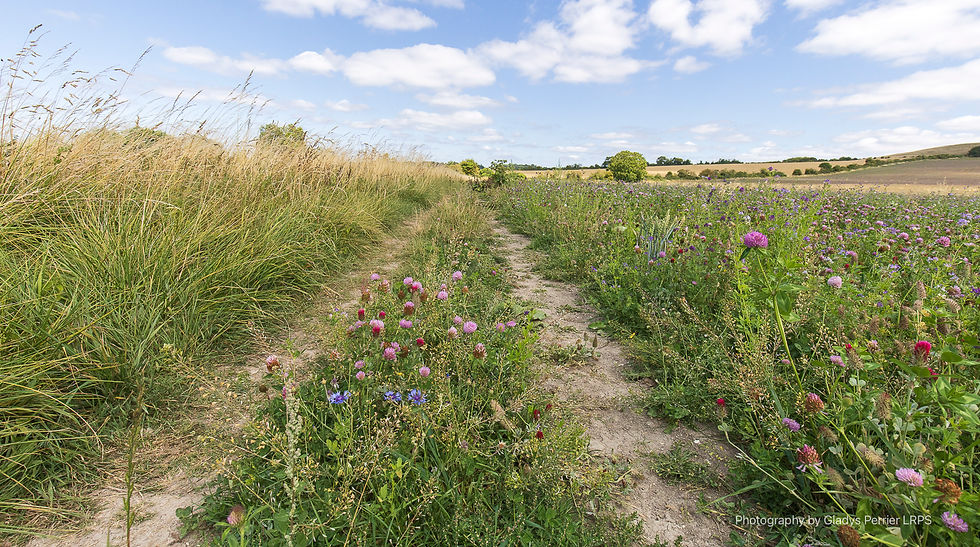
We continued along side the wildflower meadow under what was now an azure sky. Then tramping between bleached grasses and ripe wheat over hung with boughs of hawthorn laden with rich red berries.
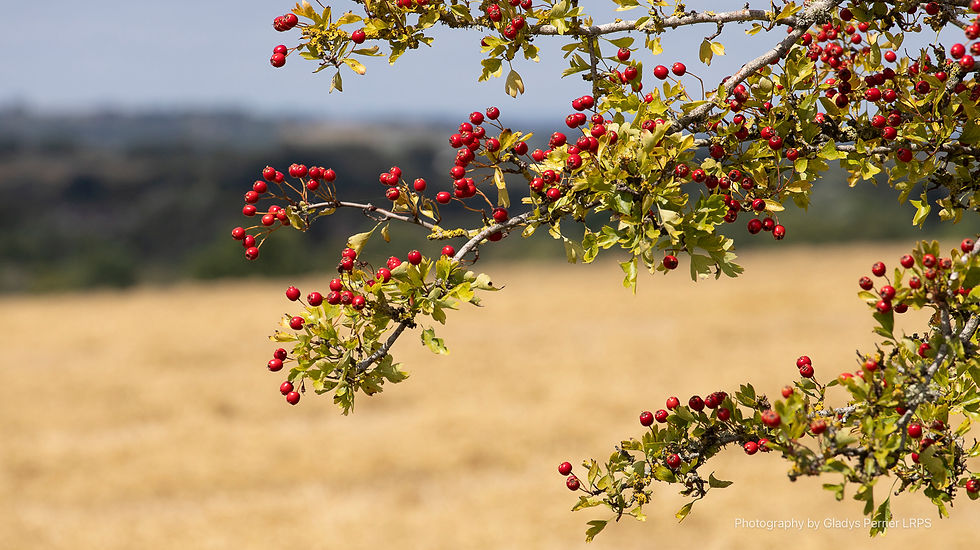
Living the Dream
We passed a blue tractor with no sign of its driver (perhaps hidden in the long grass, hat over his eyes and chewing a piece of straw. (I have no doubt that farmers rarely get to enjoy such pleasures. One can but dream).
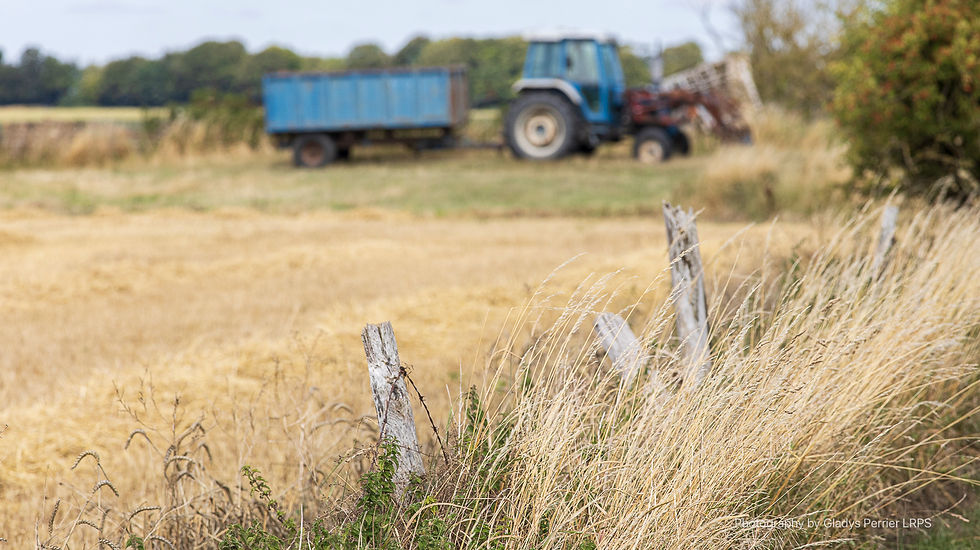
However, one dream did come true. Over the last hour I had seen flashes of blue but never close enough to examine. At last, with the blue sky above we found our bit of ‘fallen sky’ on the turf. Sitting on the ground was an Adonis blue, distinguished from the common blue by those black veins which extend across his wings and into his pretty white fringes.
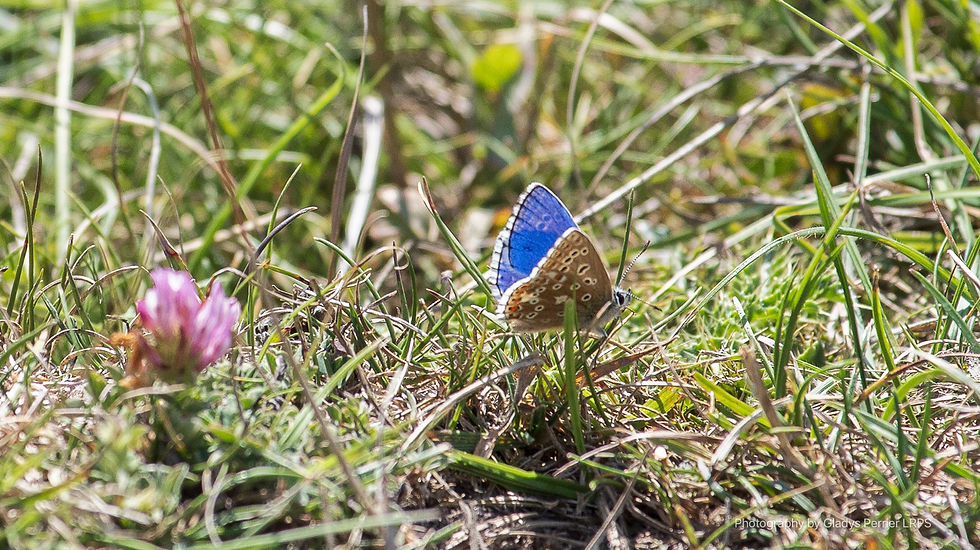
Cherhill Down
The day had certainly warmed up. We pressed on eventually following a rising grassy path leading us to the 38 metre Cherhill Monument erected by the 3rd Marquis of Landsdowne.
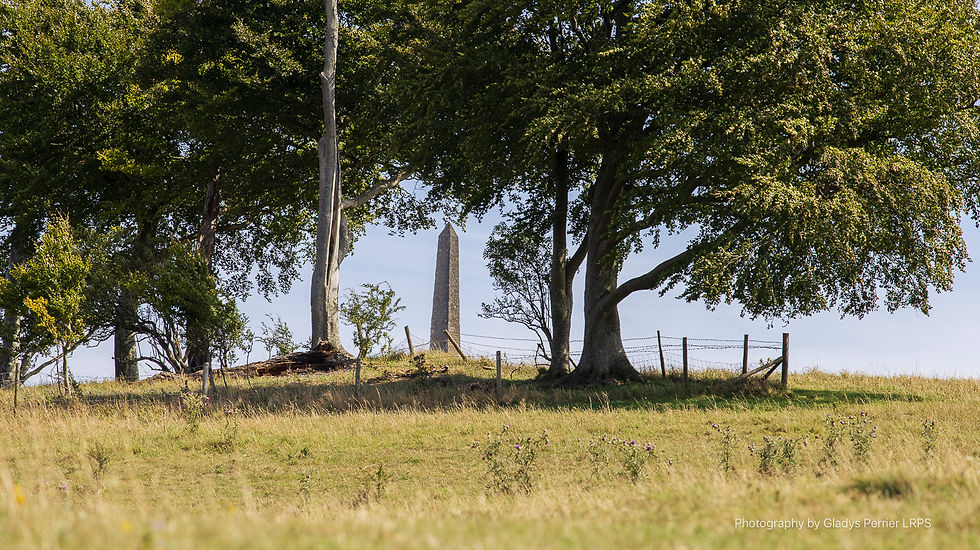
Also coming into view was the Cherhill White Horse – possibly in need of a groom. However, he stood elegantly on the hillside. He has been there a long time being the 2nd oldest of the Wiltshire White Horses (the oldest being the Westbury White Horse). He has graced these slopes since 1780 and was one among 12 horses but now, sadly only 8 remain.
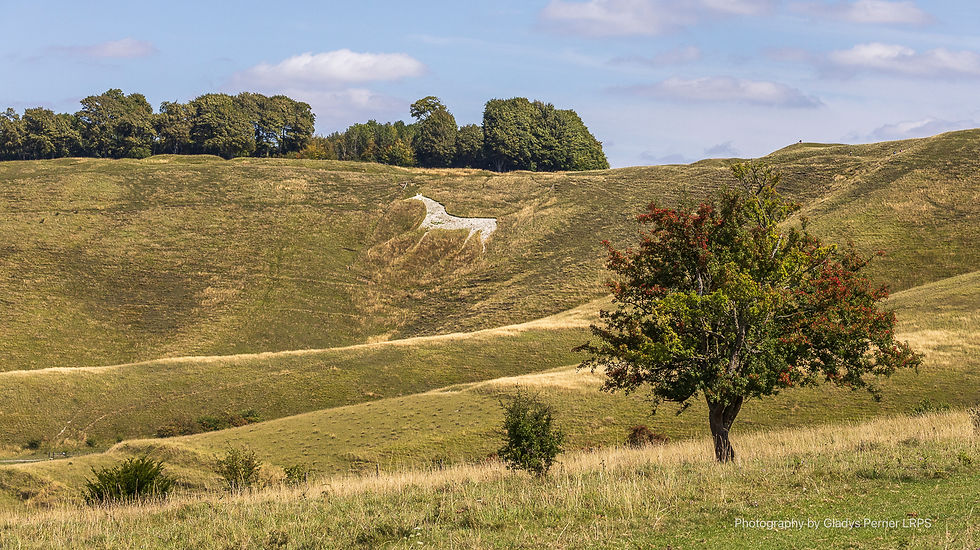
We lingered but briefly looking across the dimpled landscape to Furze Knoll beech clump and the two phone masks which marked the start of our journey, giving us a sense of the distance we had hiked and the journey ahead of us.
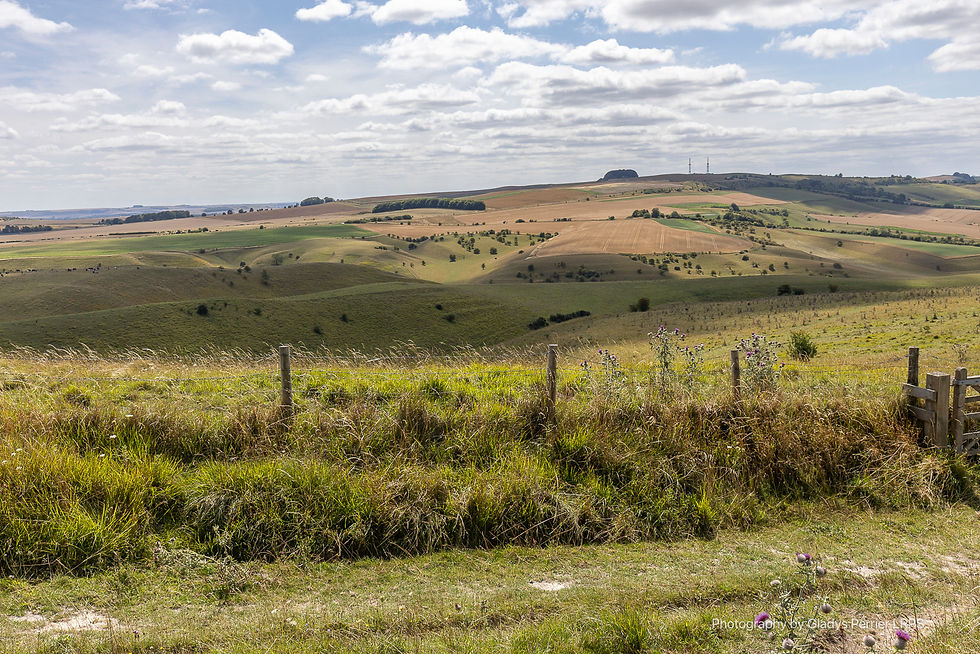
From the monument we traversed the bivallate ramparts of the hill fort of Oldbury Castle following a grass path downhill between tall whorls of woolly thistle and the much-featured hawthorn trees.
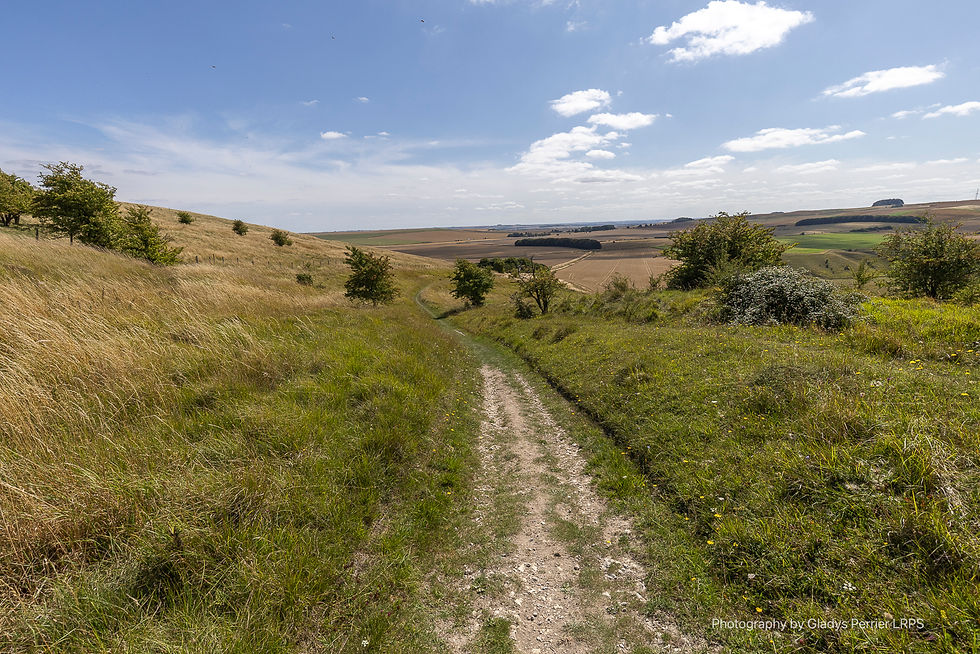
The Kerry Boys
Eventually turning right along a Roman Road, we saw a bunch of short stocky Kerry lads - Dexter cows - over the fence. Standing placidly in their jet black coats, the bull and his herd watched us with an indifferent expression.
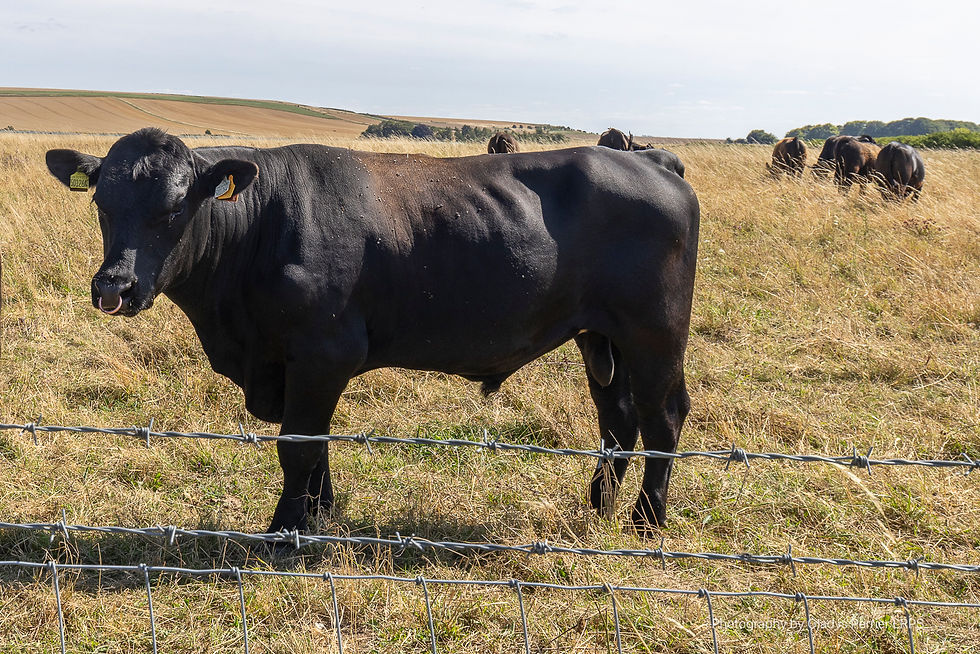
We looked back across parched grass, the strip of unripe sweet corn with the dimpled combes beyond. The distant hill side peppered with hawthorn trees appearing diminished in the wide open expanse.
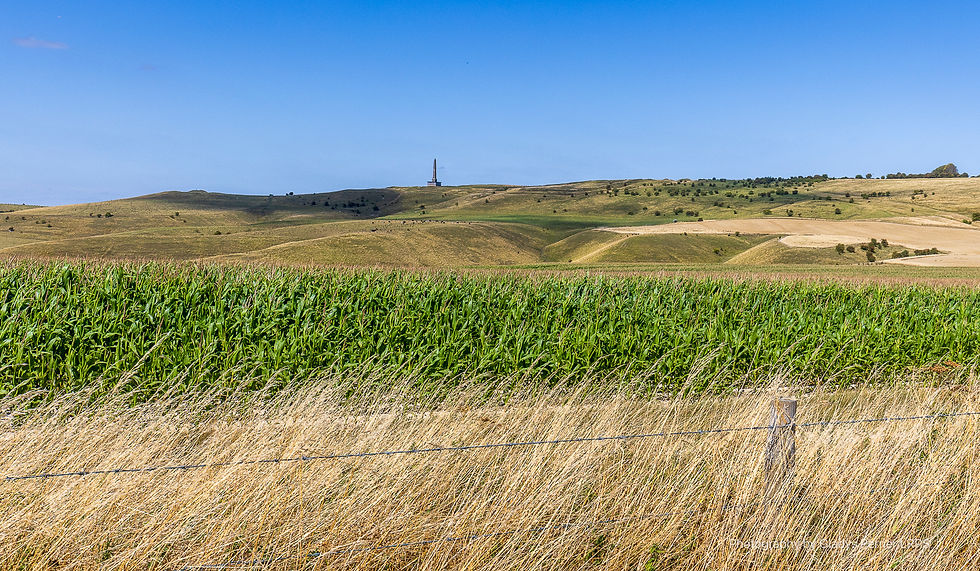
Via the Roman Road
We were on the home straight and we picked up the pace along this Roman Road, leading past Morgan’s Hill, then along part of the Wandsdyke and back to our car.
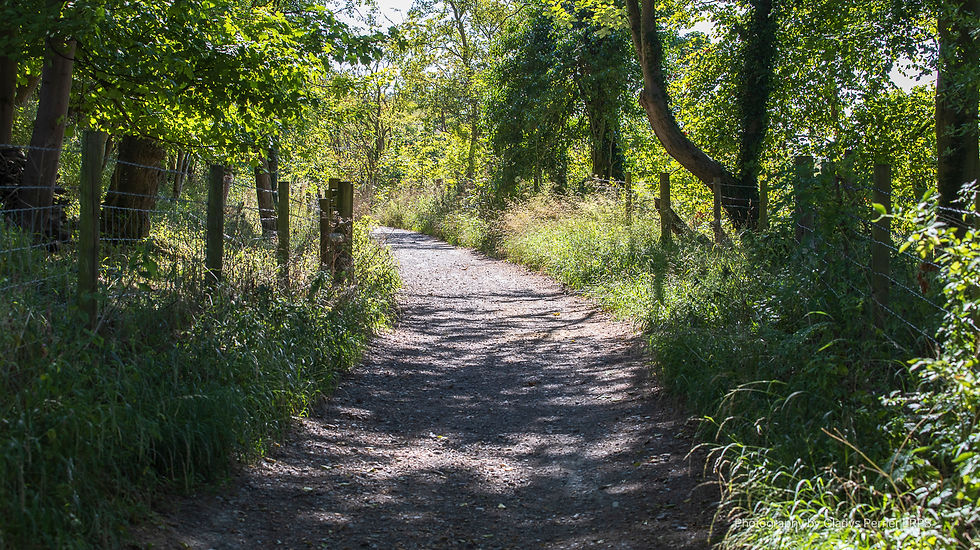
We completed our 7.5 mile hike feeling euphoric, our sense of well-being masking any feelings of fatigued as we journeyed by car back east and home.

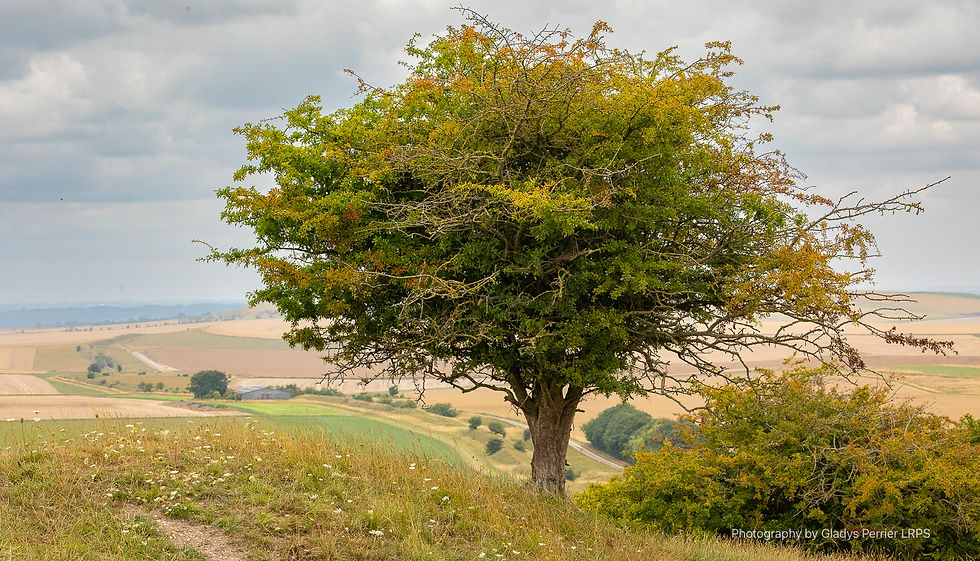
I am a senior academic consultant and content strategist at MyAssignmentsPro, a trusted online platform known for its reliable do my assignment for me services. With years of experience in academic assistance and student support, I specialise in helping learners achieve excellence through personalized, plagiarism-free solutions.
Dissertation Writing Services is a professional academic support platform dedicated to helping students and researchers achieve success in their dissertations, theses, and research projects. With a team of PhD-qualified experts across diverse disciplines, the service offers tailored guidance in research design, literature reviews, methodology, data analysis, editing, and formatting. Known for its focus on originality, timely delivery, and confidentiality, Dissertation Writing Services has supported students from leading universities in the UK, USA, Canada, Australia, and Europe. The platform’s mission is to provide reliable academic assistance that empowers learners to excel in their academic journeys.
Sunshine Skill’s ITAM ServiceNow Training in Gurgaon, expert-led course that teaches you to manage the full IT asset lifecycle—from procurement and inventory to optimization and retirement. You get hands-on experience with ServiceNow IT Asset Management (ITAM) modules like hardware (HAM), software (SAM), and compliance. This ITAM training boosts efficiency, reduces costs, and improves governance. Ideal for IT asset managers, ServiceNow admins, and ITAM practitioners looking to master asset control.
The acquisition of Moveworks by ServiceNow for $2.85 billion strengthens ServiceNow’s AI portfolio and signals a bold strategy in enterprise automation. The deal will integrate Moveworks’ conversational AI assistant and enterprise-search capabilities into ServiceNow’s workflow platform, enhancing “agentic AI,” employee experience, and self-service across IT, HR and customer service functions. By acquiring Moveworks, ServiceNow accelerates its push into large-scale AI-driven workflow automation.
At BrandWings360, our digital marketing strategy services deliver tailored solutions to drive measurable growth. From in-depth audience analysis and keyword research to multi-channel campaign execution, we build strategies that align with your business goals. Whether you're launching a brand, boosting engagement, or converting leads, our team crafts data-driven plans to maximize ROI. Choose our digital marketing strategy services for a cohesive approach that combines creativity, technology and analytics to propel your online presence.